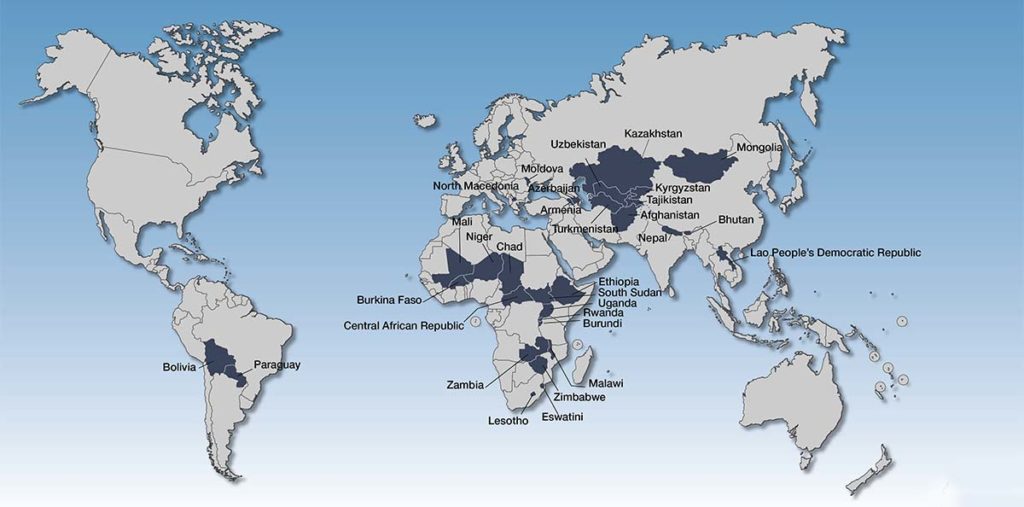Highlight 8/2022 – Addressing the gap and challenges faced by landlocked developing countries
Munkhbayar Batsuuri, 18 February 2022

Landlocked does not only mean lack of access to the sea, it also means that a country does not have the equal opportunity to promote a sustained economic development. Majority of the landlocked developing countries (LLDCs) are commodity and mineral exporters and their seaborne trade is very much dependent on the infrastructure, political and economic stability and administrative practices of their neighbouring countries, most of which are also developing states.
Compared to its maritime neighbours, landlocked countries lag behind in terms of overall development and foreign trade. As a group, the 32 landlocked developing countries are among the poorest of the developing countries, out of which 17 are considered to be least developed countries (LDCs). UNCTAD estimates that “LLDCs on average spent nearly two times more of their export earnings for the payment of transport and insurance services than the average for developing countries, and three times more than the average of developed economies”.
The global container shortage, soaring shipping cost and limited access to COVID-19 vaccines are some of the emerging challenges that the international community has to face as a whole. The pandemic has had a disproportionate impact on countries, regions and vulnerable groups. The trade-restrictive measures taken by national governments to curb the spread of COVID-19 have deteriorated the already vulnerable economies of LLDCs. Countries imposed lockdowns, changed work regimes and temporarily closed certain border checkpoints to cope with the reduction of personnel which have all attributed the major backlog and disruption in the world’s supply chain.
The United Nations adopted the 10-year Vienna Programme of Action (VPoA) in 2014 to address the special development needs and challenges faced by landlocked developing countries. The VPoA outlines the actions that need to be taken by the LLDCs, transit neighbours and development partners to establish an efficient transit system, facilitate international trade, foster infrastructure development, enhanced competitiveness, regional integration, promote inclusive economic growth and strengthen international cooperation. Improved coordination, enhanced information-sharing and close cooperation among the LLDCs, transit countries, and other actors are critical to achieve the objectives of the VPoA by 2024.
Developed partners, the UN, international and regional organizations and the private sector should enhance their efforts on providing technical, financial and capacity building assistance to LLDCs. It is imperative for governments to abstain from unnecessary restraints on the transit of essential goods and commodities to and from the LLDCs, without delay or hindrance. The LLDCs and its neighbouring countries need to direct its effort towards the utilization of trade facilitation standards and digital technologies such as electronic exchange of information, electronic tracking, automation of customs procedures and other paperless solutions.
Munkhbayar Batsuuri, Highlight 8/2022 – Addressing the gap and challenges faced by landlocked developing countries, 18 February 2022, available at www.meig.ch
The views expressed in the MEIG Highlights are personal to the author and neither reflect the positions of the MEIG Programme nor those of the University of Geneva.
